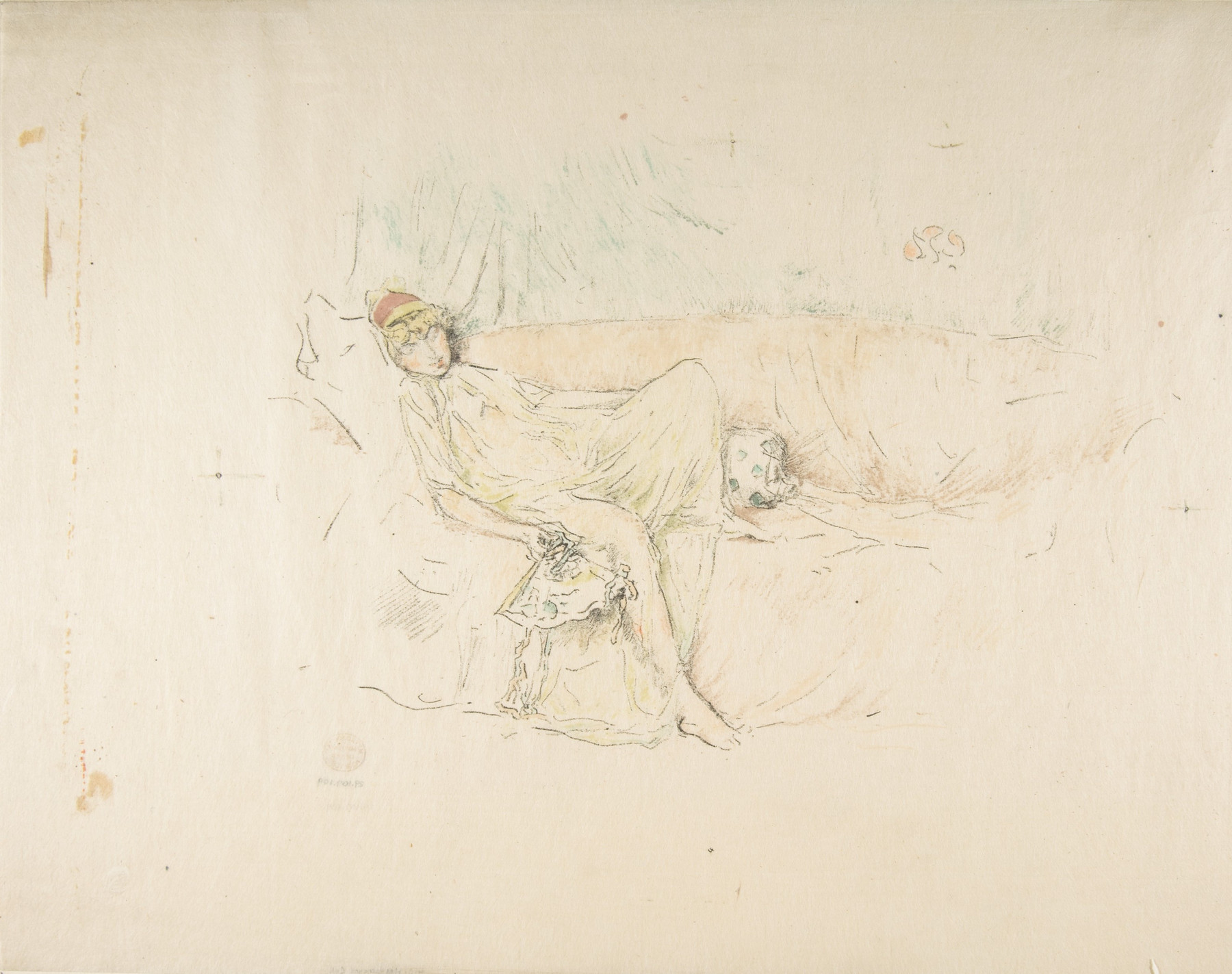Recasting Antiquity: Whistler, Tanagra, & the Female Form surveys a series of works on paper by James McNeill Whistler (1834–1903), the American artist best known for the poignant portrait of his aging mother. These pictures are of a very different order: although Whistler referred to them simply as “draped & nude figures,” scholars and collectors have tended to call them “Tanagras” after the Hellenistic terracotta statuettes unearthed in the early 1870s in the necropolis of the ancient Boeotian city of Tanagra. The figurines, which date to the third and fourth centuries BCE, were brand new to the nineteenth century. As one antiquarian observed in 1879, “Their principal charm consists in the fact that they are completely different from any other antiques we know.” Small in scale and informal in style, they typically represent ordinary mortals rather than gods and heroes, making them easy to understand and appreciate.
Ancient Tanagras depicting elegant young women tightly wrapped in swathes of drapery held the most appeal for nineteenth-century viewers and collectors. The related works by Whistler, mostly lithographs, depict the female model either nude or draped in semitransparent fabric. Despite that salient difference, the modern and ancient works share what Whistler’s biographer described as “the same flawless daintiness, the same purity of pose, the same harmony of line, the same grace of contour.” Recasting Antiquity, by juxtaposing Whistler’s “Tanagras” with the objects of their inspiration, invites consideration of the nineteenth-century taste for the figurines and what it may reveal about changing attitudes toward classical antiquity and conventional Western notions of femininity.

